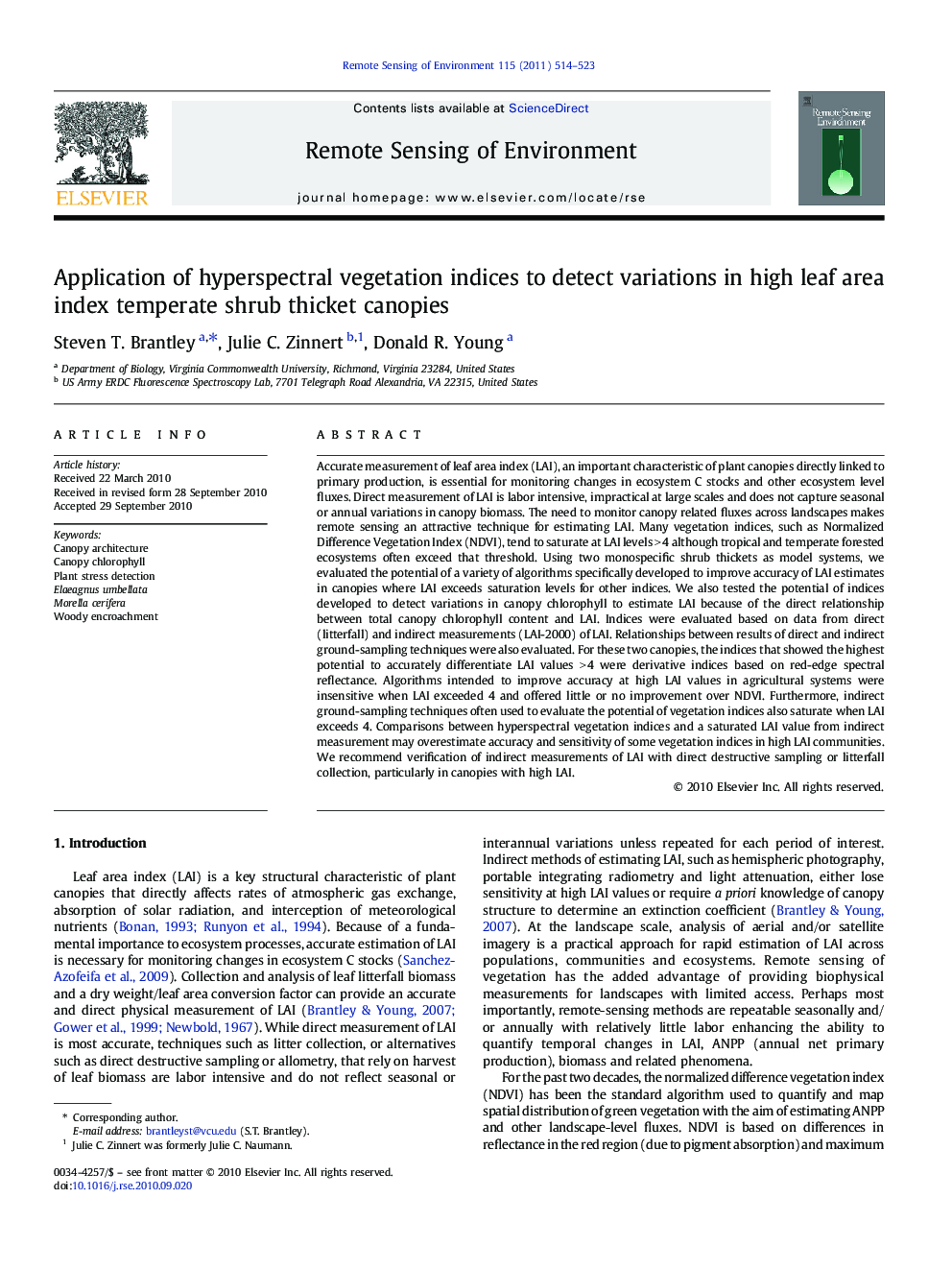| Article ID | Journal | Published Year | Pages | File Type |
|---|---|---|---|---|
| 4459653 | Remote Sensing of Environment | 2011 | 10 Pages |
Accurate measurement of leaf area index (LAI), an important characteristic of plant canopies directly linked to primary production, is essential for monitoring changes in ecosystem C stocks and other ecosystem level fluxes. Direct measurement of LAI is labor intensive, impractical at large scales and does not capture seasonal or annual variations in canopy biomass. The need to monitor canopy related fluxes across landscapes makes remote sensing an attractive technique for estimating LAI. Many vegetation indices, such as Normalized Difference Vegetation Index (NDVI), tend to saturate at LAI levels > 4 although tropical and temperate forested ecosystems often exceed that threshold. Using two monospecific shrub thickets as model systems, we evaluated the potential of a variety of algorithms specifically developed to improve accuracy of LAI estimates in canopies where LAI exceeds saturation levels for other indices. We also tested the potential of indices developed to detect variations in canopy chlorophyll to estimate LAI because of the direct relationship between total canopy chlorophyll content and LAI. Indices were evaluated based on data from direct (litterfall) and indirect measurements (LAI-2000) of LAI. Relationships between results of direct and indirect ground-sampling techniques were also evaluated. For these two canopies, the indices that showed the highest potential to accurately differentiate LAI values > 4 were derivative indices based on red-edge spectral reflectance. Algorithms intended to improve accuracy at high LAI values in agricultural systems were insensitive when LAI exceeded 4 and offered little or no improvement over NDVI. Furthermore, indirect ground-sampling techniques often used to evaluate the potential of vegetation indices also saturate when LAI exceeds 4. Comparisons between hyperspectral vegetation indices and a saturated LAI value from indirect measurement may overestimate accuracy and sensitivity of some vegetation indices in high LAI communities. We recommend verification of indirect measurements of LAI with direct destructive sampling or litterfall collection, particularly in canopies with high LAI.
Research Highlights►NDVI was ineffective at estimating LAI in Morella cerifera shrub thickets. ►Red-edge indices showed the highest potential to accurately detect LAI values > 4. ►Verification of indirect LAI measurements with direct sampling is recommended. ►Similarity in spatial resolution of airborne and ground sensors improved agreement.
